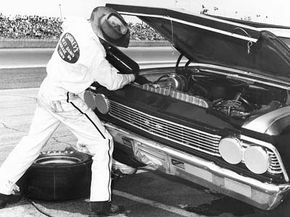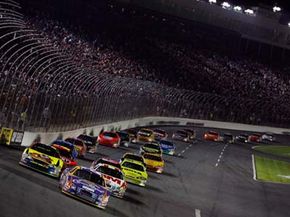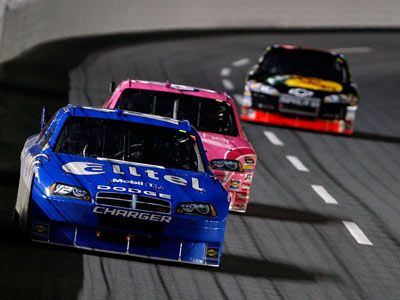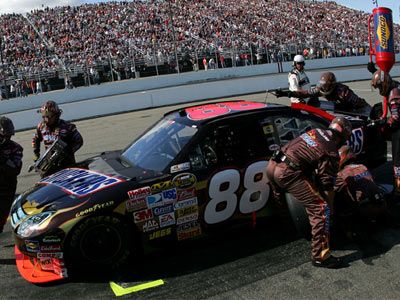With the advent of the automobile came the desire to drive fast. One place this was exemplified was in the southern Appalachians during the wild years of the Prohibition. Shooting up and down dark mountain passes with trunks full of moonshine, bootleggers souped up their cars so they could outrun the law. It seems only natural that tales of high-speed chases would encourage bootleggers to test their mettle against fellow moonshine runners in weekend races.
From legendary origins like these came stock cars -- based on general automobile design but modified for speed -- and they grew in popularity with races springing up across the country. In 1948, Bill Francis Sr. founded NASCAR (National Association for Stock Car Racing) as a sanctioning body to unify the budding sport and provide a set of coalesced rules.
Advertisement
There were few of those rules in the early days though, and in the spirit of their bootlegging predecessors, NASCAR competitors quickly began to look for ways to push the envelope. After all, if you ain't first, you're last, and in a field of fast cars and daring drivers, NASCAR teams were always looking for an edge up on the competition -- and still do to this day. While in some cases this means blatant cheating, in others the line is a bit more blurred.
A little confused? Let's take a closer look at an infamous example. Henry "Smokey" Yunick was a mechanical mastermind who had a knack for innovation. At one race, inspectors yanked the gas tank out of his racecar for a closer look -- but that didn't slow down Smokey, who proceeded to drive the car back to his garage from the track. The trick was a hefty 11-foot-long (around 3.4 meter) fuel line that could hold a whole 6 gallons (almost 23 liters) of gas [source: Yunick]. Not breaking any rules with that, right? Well after Smokey pulled that particular stunt, NASCAR was quick to add a few lines to the old rulebook. In fact, Smokey estimated that by 1970, more than half of NASCAR's rules were devoted directly to the efforts of his mechanical machinations -- according to him, a job well done! [source: McGee].
On the next page, we'll take a closer look at some of the nefarious and not-so-nefarious ways of winning NASCAR races, and whether it's as easy to get away with them as it was back in the day.
Advertisement





